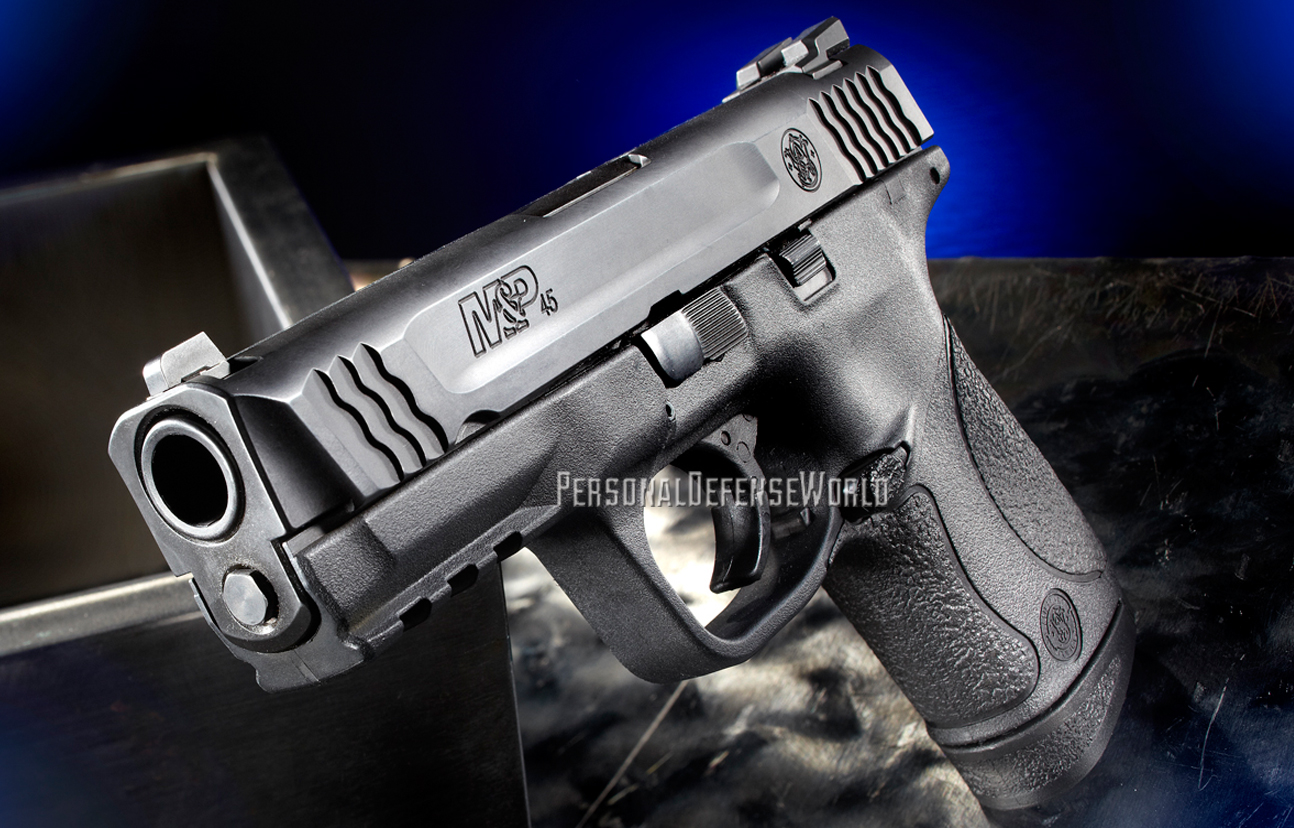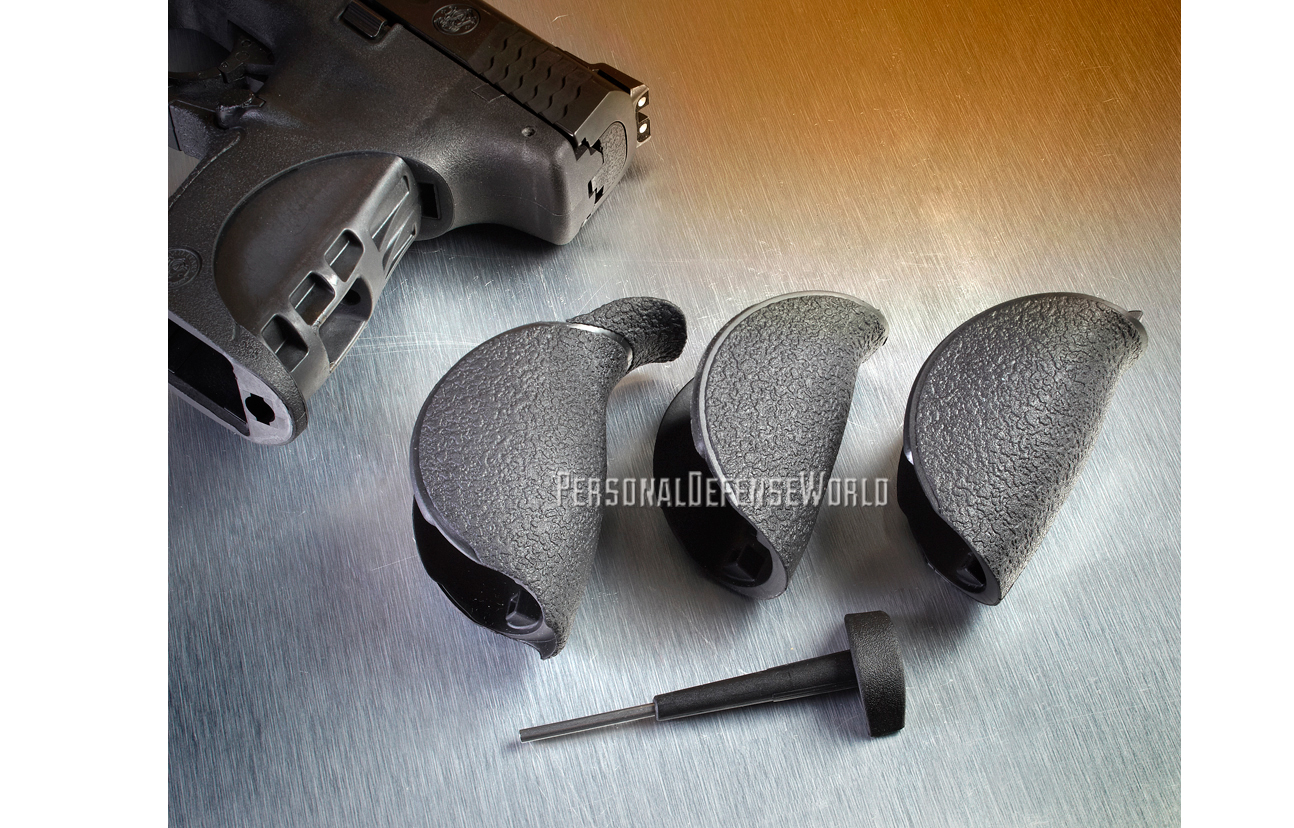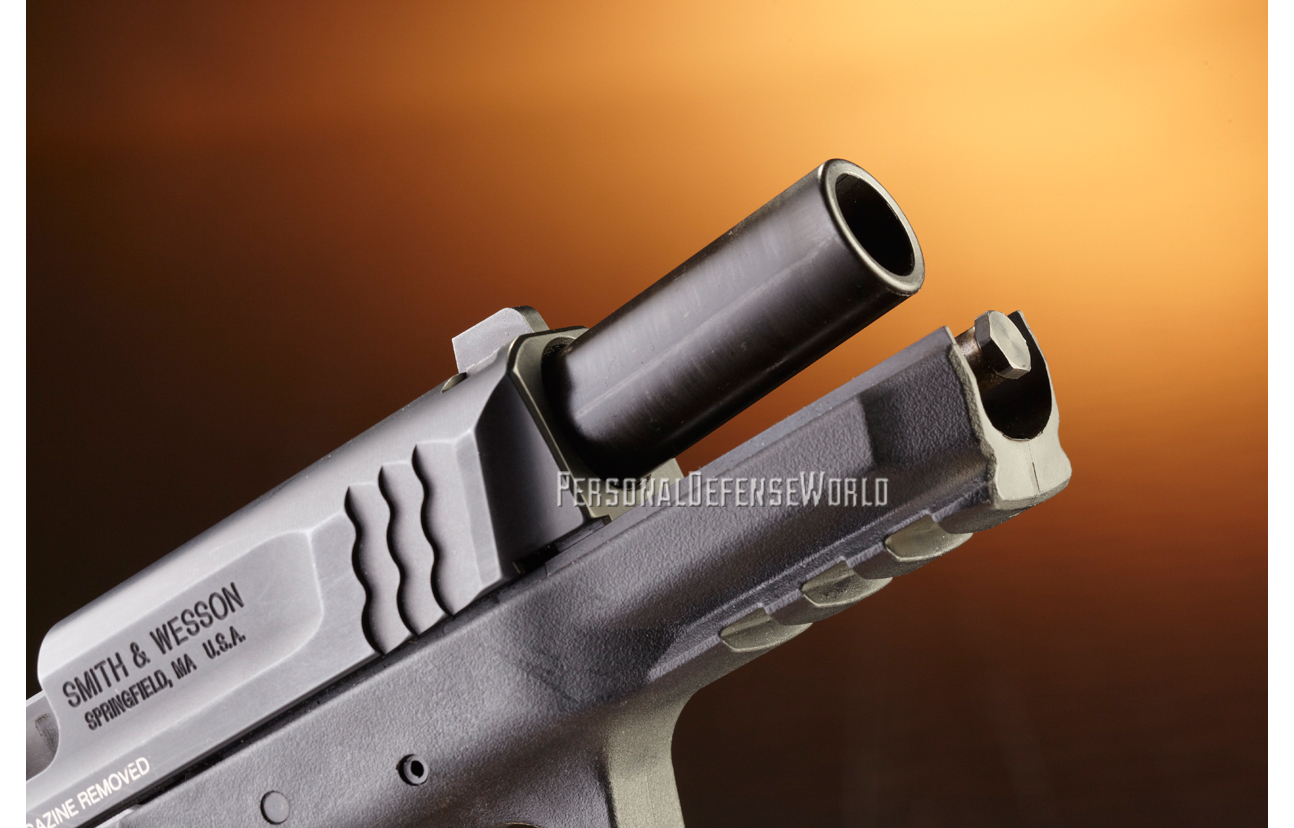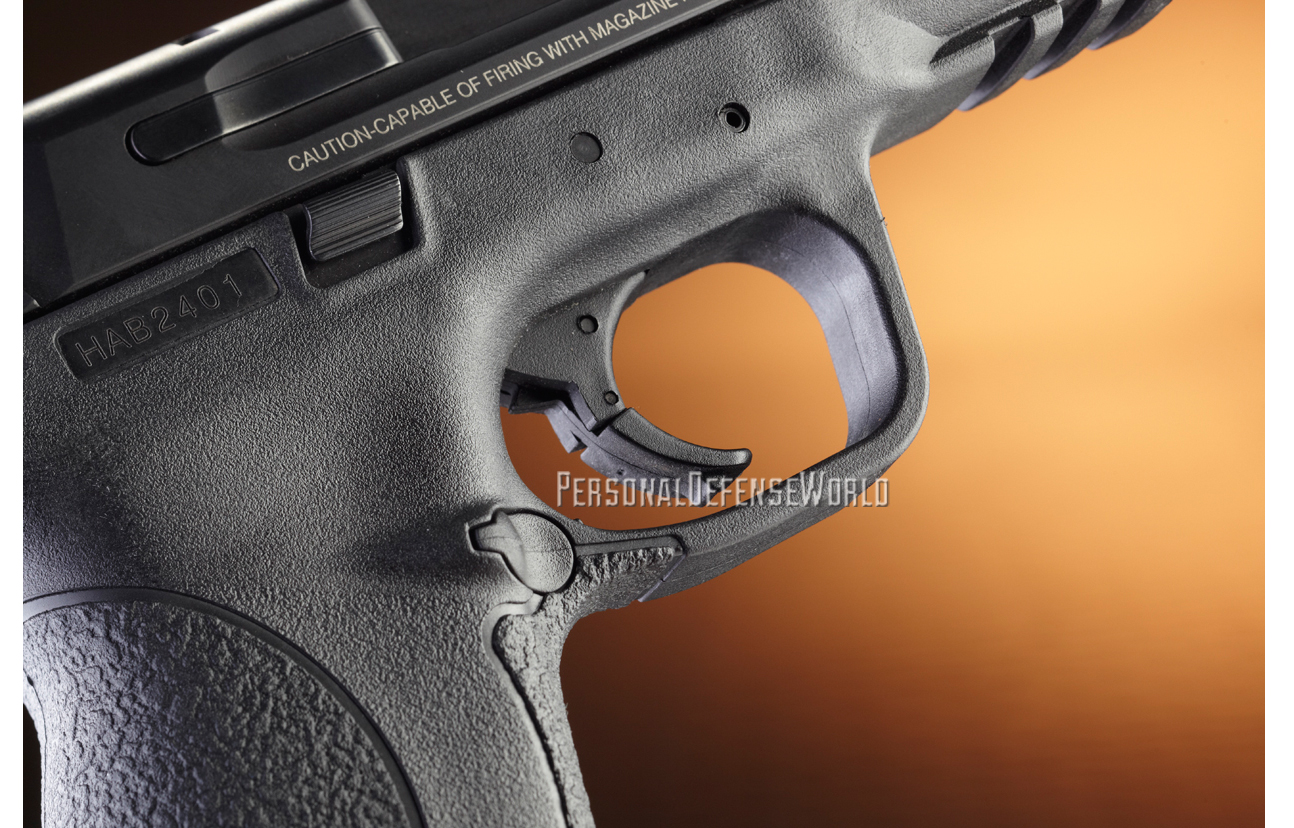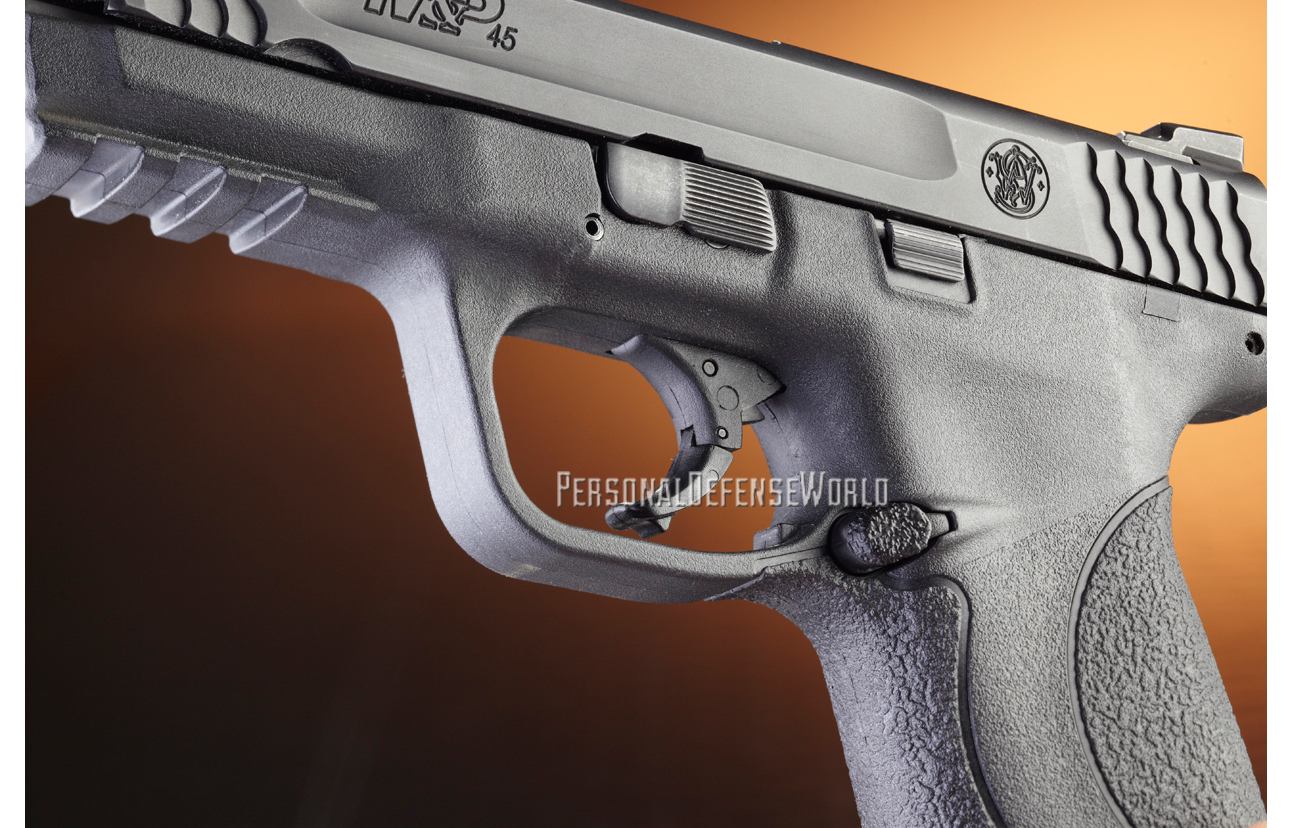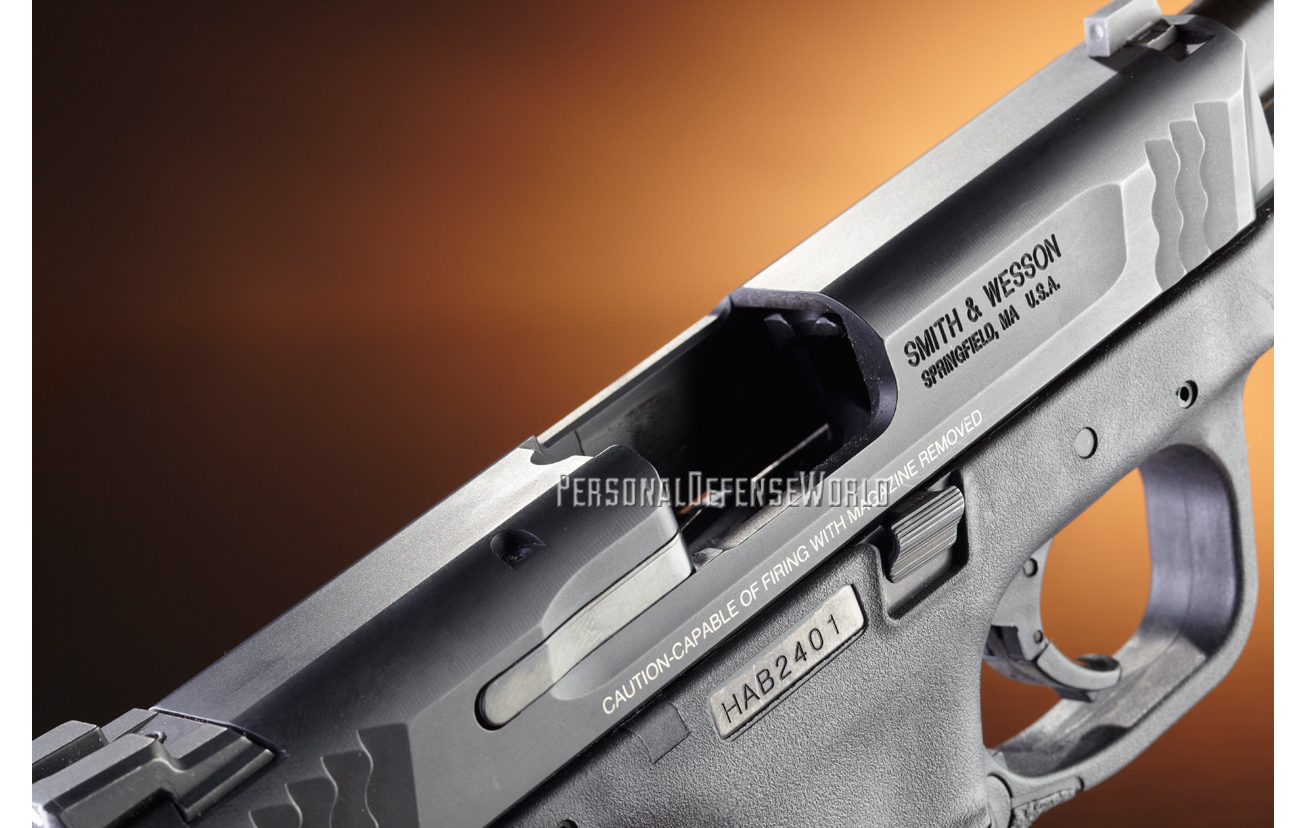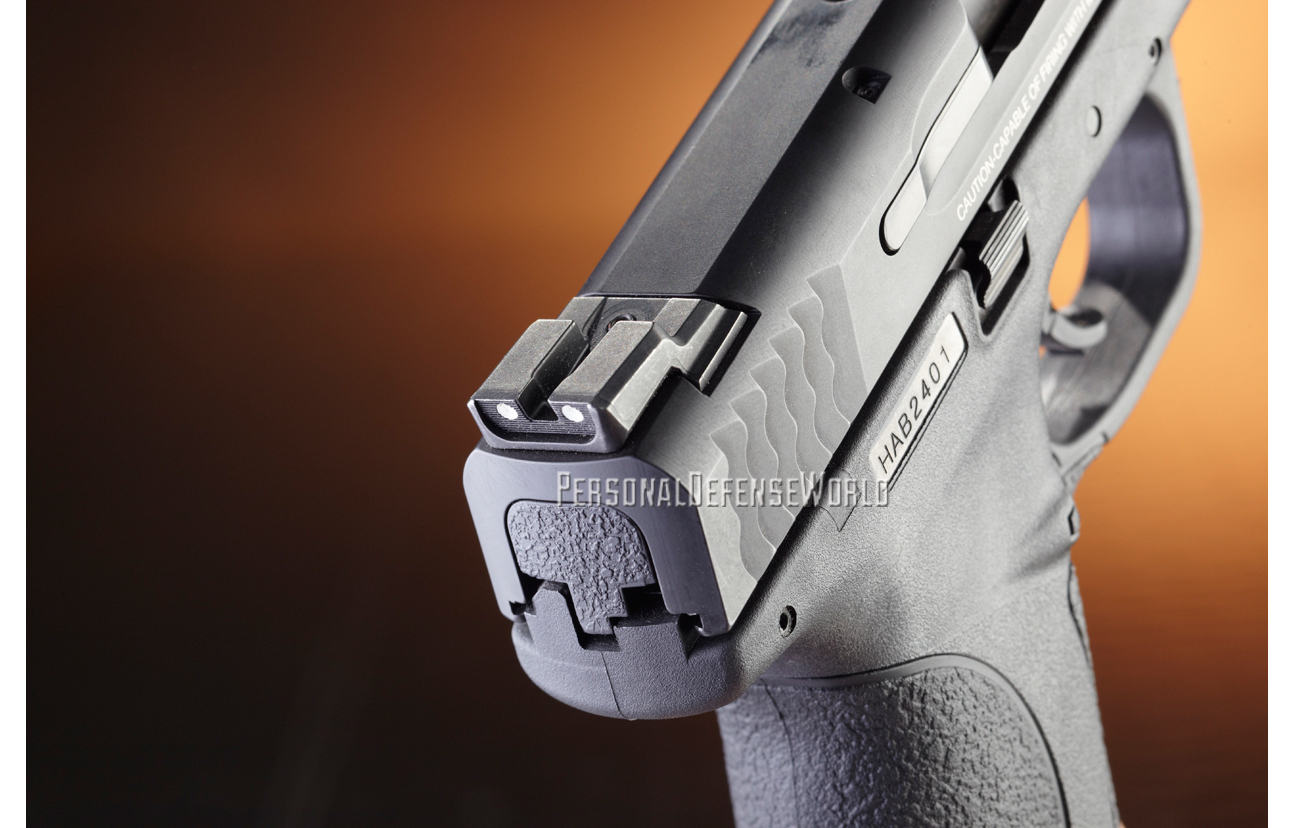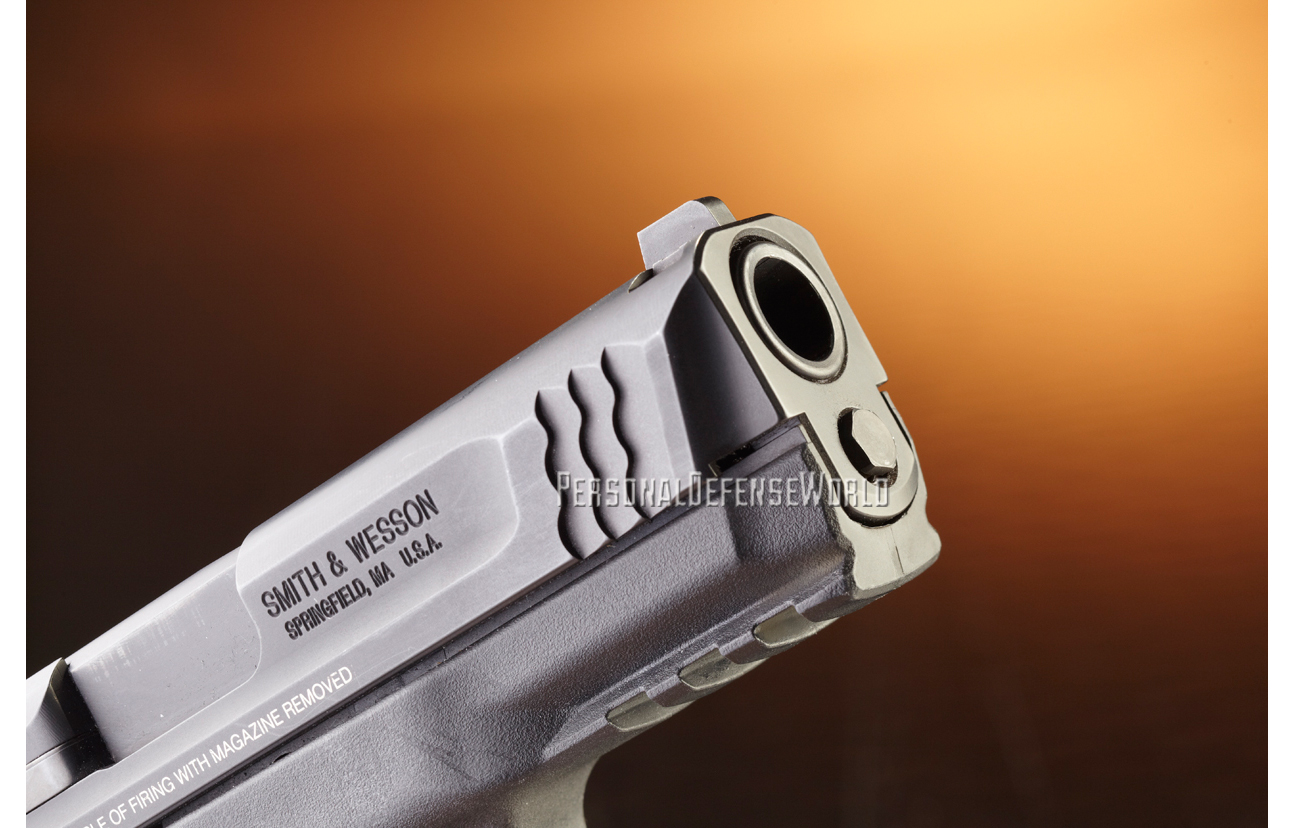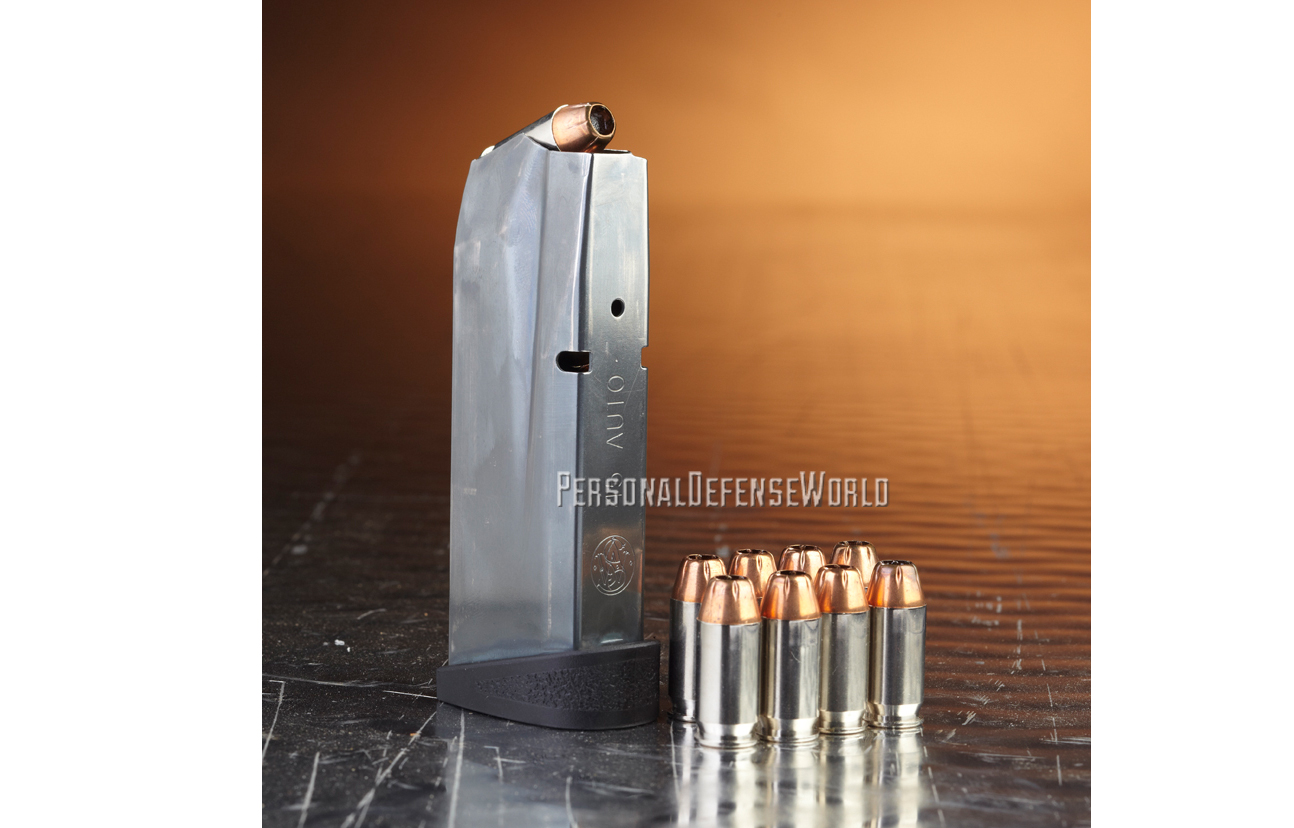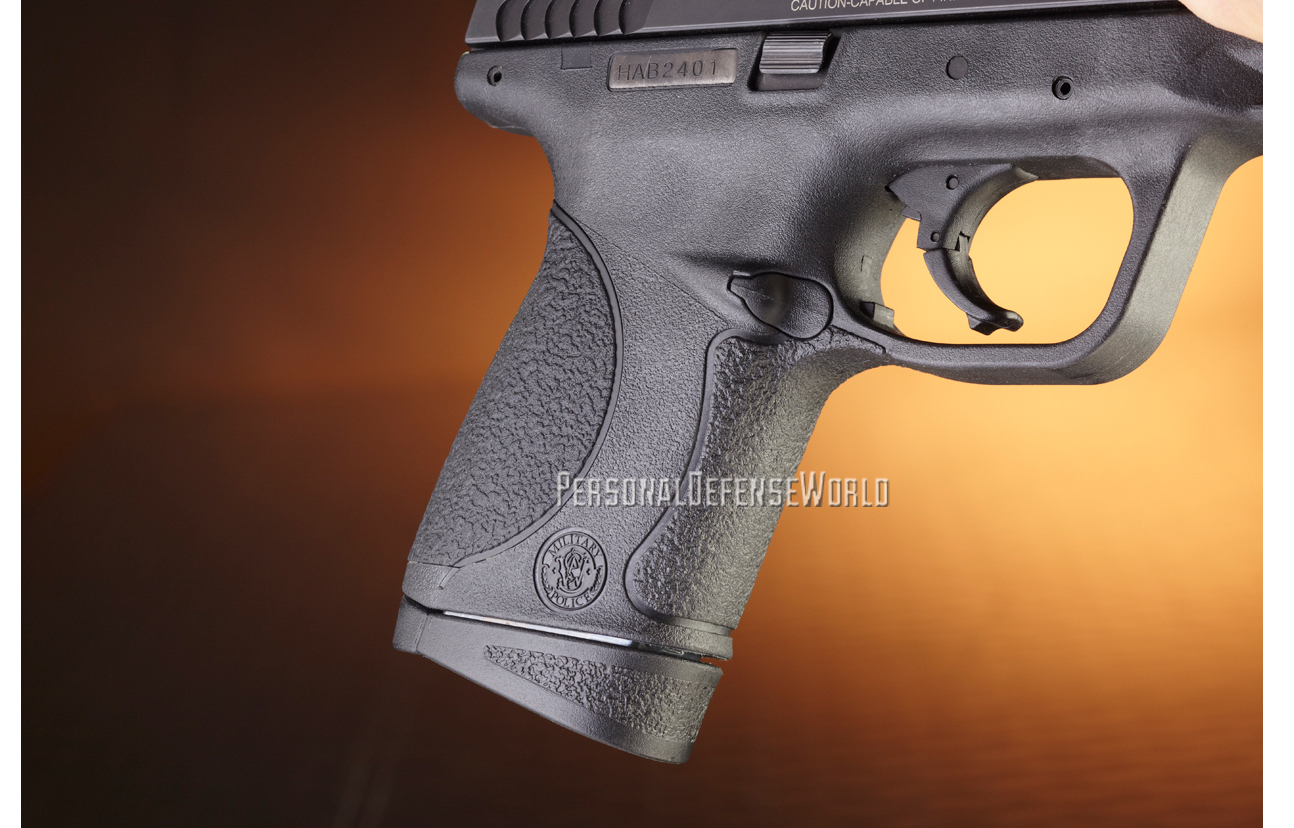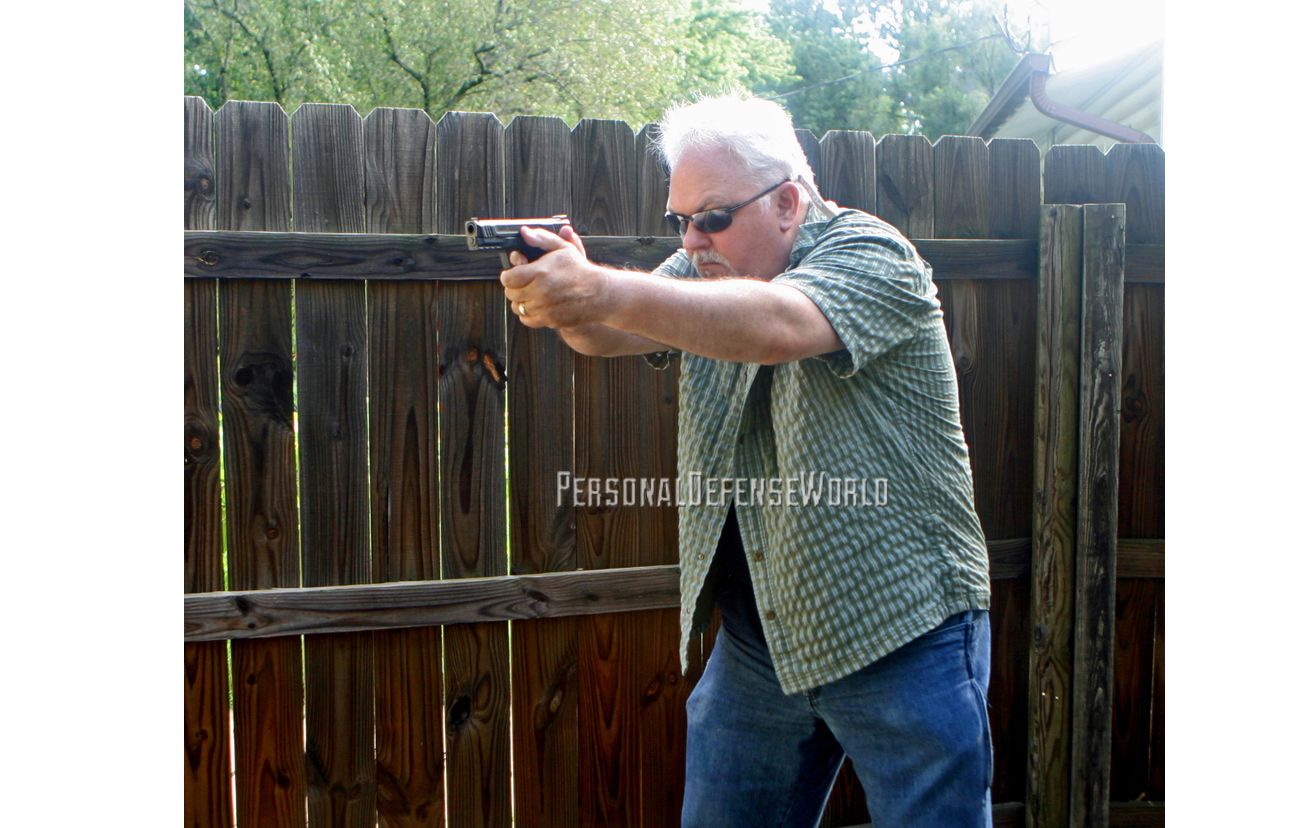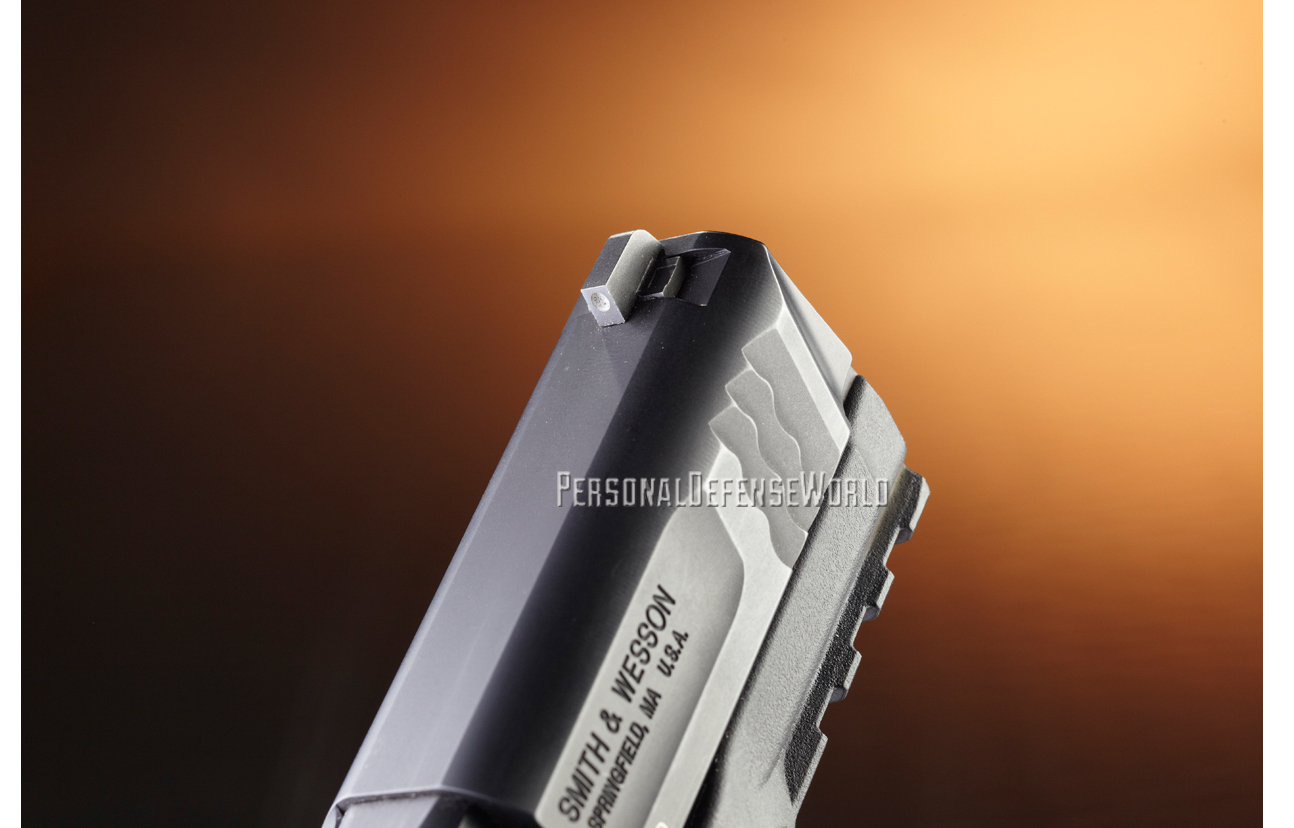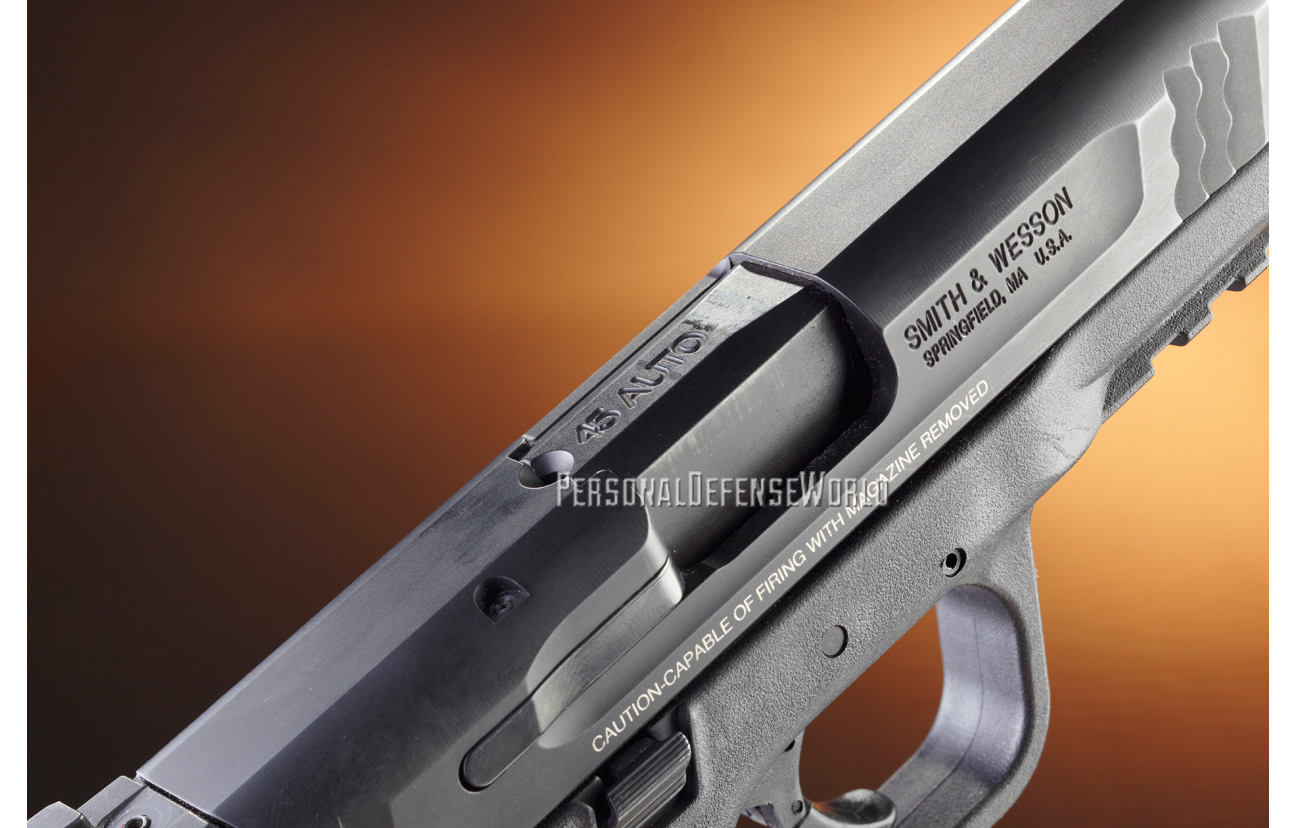The Smith & Wesson Military & Police (M&P) of old arose from the Hand Ejector line of revolvers that began in the 19th century. The idea was to have a rugged, ready-to-shoot, quick-to-reload, reliable and easy-to-carry defensive weapon for military personnel and peace officers. Throughout the 20th century, the original M&P revolvers and variants have filled military and police roles in America and around the world.
The story of the M&P autopistols has been well documented. In short, this line was S&W’s attempt to put the M&P legacy into a reliable, quick-to-shoot-and-reload, rugged, easily carried, defensive autoloading handgun.
Recently, I was able to test a new S&W M&P45c, the compact variant of the M&P45. And while I’ve had considerable experience with the M&P line of pistols, a couple of the newer M&P revolvers, and even the M&P15 rifle line, I’ve never had a chance to handle an M&P45c.
Advertisement — Continue Reading Below
Gun Details
At first glance, I considered the gripping surface of the frame too short for good control, while the 4-inch barrel and slide combination of the mid-sized M&P45 seemed too long for the compact version of the .45. I was mistaken, however. As I removed the new gun from the box, I immediately realized how well the M&P45c fit my hand with the flat-floorplate magazine in place. There was no wasted space, but my entire hand could completely grip the pistol. The apparently “over-long” slide/barrel was not over-long in terms of handling. It was just right.
The M&P autopistols have been around since late 2005. The slide and barrel are through-hardened stainless steel finished with a corrosion-resistant finish for a hardness rating of 68 HRC. Unlike earlier iterations of the M&P semi-autos, the current guns are no longer marked “stainless” on the left side of the slide. The M&P45c also has a new low-profile rear sight with a cocking ledge and no manual thumb safety. The pistol also lacks the longer “frame tool assembly”—the part that holds the interchangeable backstrap in place and can be used to push down the sear-deactivation lever. It lacks a lanyard loop, but since it’s designed for concealment, the M&P45c doesn’t need the added protection a lanyard loop offers.
Speaking of the interchangeable palm swells/backstraps, I changed the one that came installed on the gun immediately. The M&P45c is shipped with the medium-sized backstrap installed, as well as a larger and smaller version. I put the small backstrap on the gun.
Advertisement — Continue Reading Below
Like the other M&Ps, the M&P45c ships with a pair of magazines. They are rated for eight rounds, but it’s a tight fit when you try an in-battery reload. One magazine has the flat floorplate for concealment and the other has an extended floorplate, which provides a place for the small finger to rest.
An eight-shot capacity, legal nearly everywhere but New York, actually exceeds the capacity of the century-long world standard of service autopistols, the Model 1911—originally and for many years thereafter issued with seven-round magazines. Trying a 10-round spare magazine from my Apex Tactical Limited M&P45 in the M&P45c, I found the magazine locked up just fine with no hint of a propensity to overtravel if I was in a hurry. Brownells supplied me with a couple of M&P45 magazines, including a long 14-round unit. Likewise, that high-capacity magazine locked up perfectly. Shooting, of course, would determine the reliability of the setup.
The compact pistol’s action, like other M&P semi-autos, is a modern striker-fired design. The gun is narrow, less than 1.25 inches wide, and it fits most M&P holsters I’ve tried, including the leather, pancake-style Galco COP holster; the
Blade-Tech Eclipse OWB holster; the Blade-Tech IWB holster; and a CrossBreed SuperTuck Deluxe. The only M&P45-size magazine pouch I had was a double unit from Blade-Tech that the 10- and 14-round magazines both fit into. I decided that if I carried a pair of spares—not usually likely—the long magazine would go to the back for a tactical reload. The first spare mag was to be the more easily handled 10-round unit.
Advertisement — Continue Reading Below
Randi Rogers at Comp-Tac also sent along a pair of the company’s single mag pouches. While I’d likely carry only one at a time concealed, I had some latitude to add the second easy-on pouch in a moment if needed. Not being joined, it’d be easier to sort around on the belt.
Range Time
I took the M&P45c to the range with an assortment of ammunition, my Shooting Chrony chronograph, several targets and a mission in my mind. There were no real surprises with the M&P45c in this regard other than its consistency. As the gun is meant for concealed carry, and because I’m not particularly enamored of +P loads of any type in .45 ACP pistols, I settled on two standard-velocity loads with standard bullet weights. To mix things up, I added the CorBon DPX +P load. The accuracy was stable across the loads tested.
The real test is how the gun and cartridge combine in terms of handling. This has more to do with recoil control, the placement and type of controls, and its ergonomics in general. Because whatever you face on the street will test your gear’s real-world practicality and reliability, I conducted a few handling tests in this same manner.
Advertisement — Continue Reading Below
In Gila Hayes’ book Effective Defense, she explains a course of fire designed for an individual to determine if a particular gun was a good fit for a shooter. That course of fire, reported by master instructor Claude Werner, is to put five shots into 5 inches at 5 yards in 5 seconds. A more practical test of a carry gun/caliber combination for self-defense, I decided to try it with the S&W M&P45c on some 50-yard, color-coded Champion VisiColor targets, which feature two 5-inch bullsyes that show a splash of color when a bullet strikes.
The procedure is to start from a ready position with the pistol pointed at the base of the target frame. On the beep from your timer, put five hits into a 5-inch circle from 5 yards. I put three of the targets up (remember, each target had two bullseyes). I used the first to slow-fire five hits at the same aiming point to determine my point of aim/point of impact relationship. I found the five rounds in one hole at 6 o’clock in the bull.
After my first sub-4-second run had five hits in the 5-inch bull, I was pretty happy with myself. Trying the same pace two more times had me putting a hit outside the circle on each attempt. As I settled in at around 4 seconds, all five rounds smacked well inside the 5-inch circle. These aren’t exactly the best results for the “Bill Drill,” as I find my grip failing as I approach the age for Social Security. Still, I feel that the 4.1- to 4.4-second times are okay. I’m not afraid to carry the M&P45c. If this gun was made exactly this size but in 9mm, it’d be hard to beat, and I’d be keeping those 5×5 times around 3.5 to 4 seconds or so.
Advertisement — Continue Reading Below
Doing the same drill from the holster, you’d have to be on your game. Bobble the draw just a little, and you’re behind the clock. Understand that this drill is just designed to help you see if the gun and caliber combination are a good choice for you in terms of controllability. It’s not something to practice each trip, but it’s harder than it sounds. Try it with your everyday carry gun.
As a more mainstream handling test, I fired the Gunsite 250 School Drill, using their target and my aged Pocket Pro timer. I used a vintage Blade-Tech paddle holster worn without a cover garment. Using Gunsite Instructor Ed Head’s “lazy man” method (no prone at the end), I completed the drill successfully.
My friend, Lt. Chuck Haggard, also shot the M&P45c and found, as I did, the length of the grip frame was just right for his hand, wide as it is. I had him try it with the 10-shot and 14-shot magazines as well. He fired a few boxes of ammo and said that the trigger wasdifferent, but he was able to easily adjust to it. He tried to rack the slide one-handed using the newly issued rear sight against his belt, and it worked just as it was designed.
Advertisement — Continue Reading Below
Final Notes
The M&P45c, like its big brother, is a soft-shooting .45 ACP. The trigger got smoother with continued use. Doing some regular dry-fire practice—no ammo in the room, a bullet-stopping wall and my old Pocket Pro timer—I got the time for my first shot down and noticed decreasing movement of the front sight at the click of the trigger.
I wore the M&P45c as my carry gun throughout the month of July. On a road trip, it split its time between a Blade-Tech Eclipse and the Crossbreed SuperTuck Deluxe under an untucked shirt. I backed up the standard magazine in the gun with a 10-round magazine in a Comp-Tac magazine pouch. It doesn’t hurt to have a few more rounds accessible.
If you feel unarmed with anything less than a .45, the M&P45c more than fits the bill. I’d be happy to carry it in plainclothes or even in uniform were I still in law enforcement. I’m vastly impressed with this pistol. The form factor plus the caliber makes this the gun to beat. For more information, visit smith-wesson.com or call 800-331-0852.
Advertisement — Continue Reading Below
BUY NOW! www.personaldefenseworld.com/subscribe/combat-handguns.
